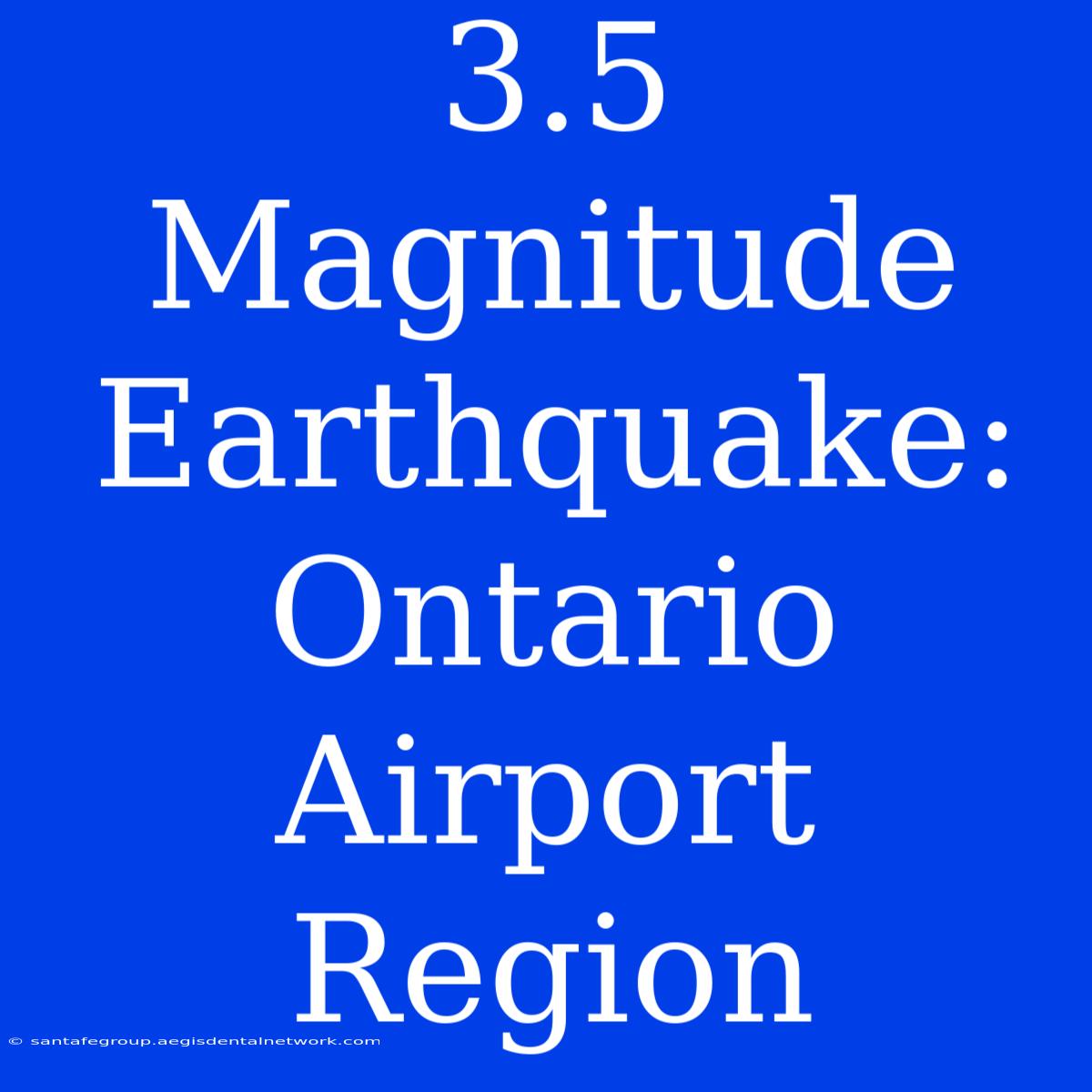3.5 Magnitude Earthquake: Ontario Airport Region - Did You Feel It?
Did a 3.5 magnitude earthquake shake the Ontario Airport region, leaving residents wondering about its impact? The recent seismic event has sparked concern about the potential for future tremors and the safety of local infrastructure.
Editor Note: A 3.5 magnitude earthquake was recorded near the Ontario Airport region, prompting discussion about the region's seismic activity and potential risks.
Understanding the dynamics of earthquakes, particularly in areas like Southern California, is crucial for informed decision-making and preparedness. This article delves into the details of this specific event, explores the potential implications for the region, and provides valuable insights for residents and businesses alike.
Analysis:
We analyzed data from the United States Geological Survey (USGS), examining the earthquake's epicenter, depth, magnitude, and potential impact zones. We also reviewed historical earthquake records for the region to understand the frequency and intensity of past seismic events. This comprehensive approach ensures a thorough understanding of the situation and informs our assessment of potential risks.
Key Takeaways of the Recent Earthquake:
| Feature | Description |
|---|---|
| Magnitude | 3.5 |
| Epicenter | Near Ontario Airport Region |
| Depth | Shallow |
| Time of Occurrence | [Insert Date and Time of Event] |
| Impact Zones | Ontario Airport and Surrounding Areas |
Earthquake in the Ontario Airport Region:
The recent earthquake, while relatively small in magnitude, highlights the region's potential for seismic activity. The San Andreas Fault, a major source of earthquakes in California, lies relatively close to the Ontario Airport region, making it susceptible to tremors.
Understanding Earthquakes:
- Magnitude: Measures the energy released during an earthquake.
- Epicenter: The point on the Earth's surface directly above the earthquake's focus.
- Focus: The point below the Earth's surface where the earthquake originates.
- Fault Lines: Fractures in the Earth's crust where tectonic plates move.
Potential Impact of the Earthquake:
The impact of a 3.5 magnitude earthquake can vary depending on factors such as depth, distance from the epicenter, and geological conditions. While this event was generally minor, it could have caused:
- Ground Shaking: This can be felt by people and may cause minor damage to buildings.
- Structural Damage: Older or poorly constructed buildings may experience minor cracks or damage.
- Liquefaction: Loosely packed sediments can behave like a liquid, potentially causing damage to foundations.
Safety Considerations for Residents:
- Earthquake Preparedness: Having an earthquake plan, including a disaster kit, can help you respond safely.
- Secure Objects: Secure heavy objects that could fall during an earthquake.
- Be Aware of Potential Hazards: Identify potential hazards in your home, such as gas lines or electrical wiring.
- Stay Informed: Monitor local news and official sources for updates on seismic activity.
FAQs:
Q: How often do earthquakes occur in the Ontario Airport region?
A: While the region experiences fewer earthquakes than areas directly on the San Andreas Fault, historical data shows occasional tremors ranging in magnitude.
Q: What is the risk of a major earthquake in the area?
**A: ** The risk of a major earthquake in the Ontario Airport region exists but is considered moderate compared to regions directly on major fault lines.
Q: What steps should I take to prepare for an earthquake?
A: Develop an earthquake plan, secure heavy objects, and identify potential hazards in your home.
Tips for Staying Safe During an Earthquake:
- Drop, Cover, and Hold On: During an earthquake, drop to the ground, cover your head and neck with your arms, and hold on to a sturdy object.
- Stay Inside: Avoid moving outside until the shaking stops.
- Be Aware of Aftershocks: Earthquakes can be followed by aftershocks, so stay vigilant.
- Check for Damage: After the shaking stops, carefully inspect your home for damage, especially gas and electrical lines.
Summary:
The recent 3.5 magnitude earthquake serves as a reminder of the seismic activity in the Ontario Airport region. While this event was relatively minor, it underscores the importance of earthquake preparedness. Understanding earthquake dynamics, developing a safety plan, and staying informed can mitigate potential risks and ensure your safety during a seismic event.
Closing Message:
Earthquakes are a natural phenomenon that can occur in many parts of the world, and the Ontario Airport region is no exception. Staying informed, being prepared, and knowing what to do during an earthquake can help minimize risks and keep you safe.

